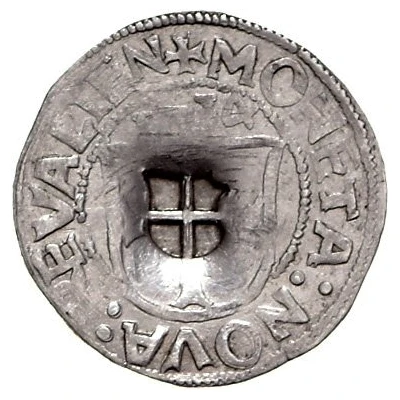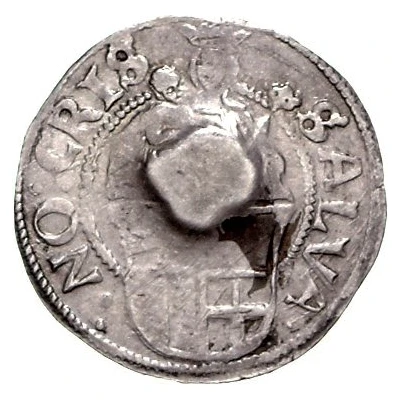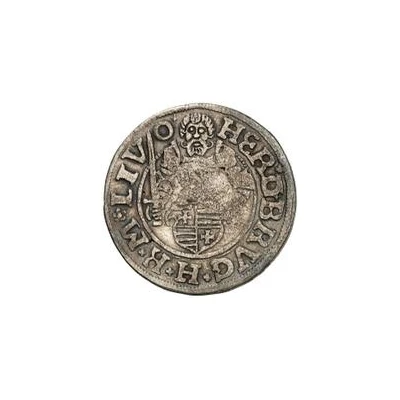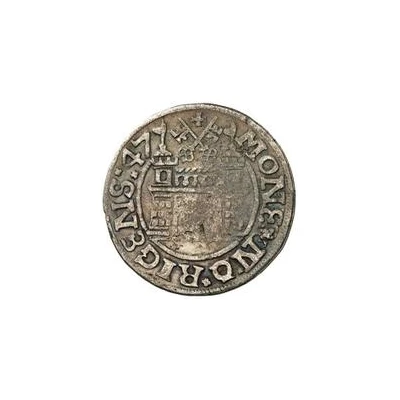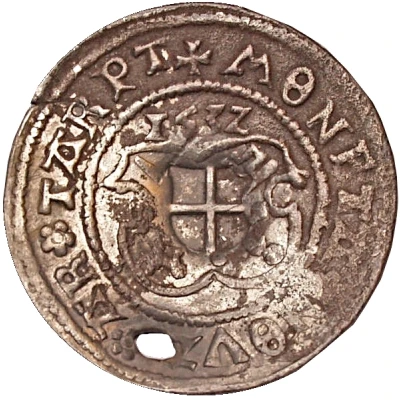
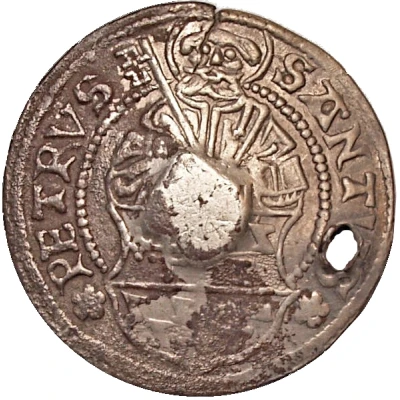

© Haljak Coin Auction
1 Ferding Reval countermark ND
| Silver (.930) | 2.72 g | 24.5 mm |
| Issuer | Livonian Order (Livonian Confederation) |
|---|---|
| Master | Walter of Plettenberg (1494-1535) |
| Type | Standard circulation coin |
| Years | 1532-1534 |
| Value | 1 Ferding = 12 Schilling |
| Currency | Schilling (1422-1561) |
| Composition | Silver (.930) |
| Weight | 2.72 g |
| Diameter | 24.5 mm |
| Shape | Round |
| Technique | Countermarked |
| Orientation | Variable alignment ↺ |
| Demonetized | Yes |
| Updated | 2024-10-06 |
| Numista | N#143413 |
|---|---|
| Rarity index | 100% |
Reverse
Person above four-sectioned shield hold key and surrounded by legend.
Script: Latin (uncial)
Lettering: SANCTVS · PETERVS
Lettering (regular font): SANCTVS · PETERVS
Translation:
Sanctus Peter
Saint Peter
Edge
Plain
Comment
The host coin for the countermark is a 1 Ferding piece from the Livonian Order, minted in Reval. The latest known date is 1534, which was probably the date the host coins were countermarked. Even so, some could have also been marked a few years earlier.The Bishopric of Dorpat also struck their own countermarks onto these coins.
In 1525, when the silver purity of the schillings was decreased, the ferdings increased in value. Before, 1 Ferding = 9 Schilling; after, 1 Ferding = 12 Schilling. The countermark was used to show the increase of the value of the ferdings.
The exact lettering of the surrounding legend may vary.
1532:
1) SANCTVS · PETERVS / MONETA · NOVA · AR · TARPA
1533:
1) SANCTVS · PETERVS / MONETA · NOVA · AR · TAR
Interesting fact
One interesting fact about this coin is that it was used as a form of currency during a time of great change and upheaval in the region. The Livonian Order was a military order that controlled a large portion of the Baltic region during the Middle Ages, and the coin was likely used to facilitate trade and commerce within their territory. Despite the turmoil of the time, the coin remains a testament to the economic and cultural achievements of the Livonian Order.
